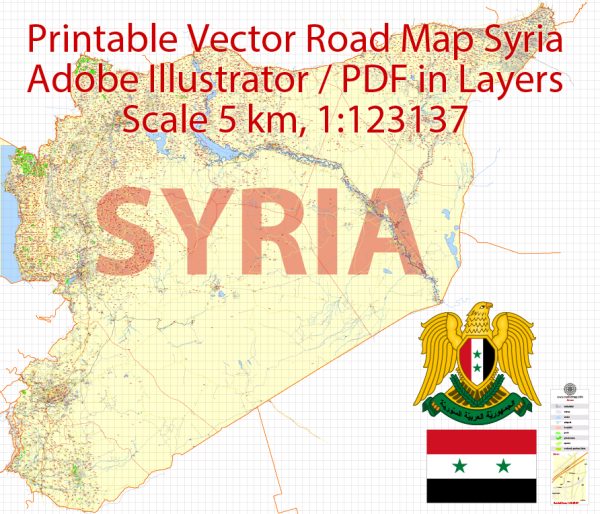The history of urban development in Syria is rich and diverse, shaped by the region’s long and complex history. Here is an overview of key periods and influences on Syria’s urban development:
Ancient Period:
- Mesopotamian Influence (circa 3000 BCE): The earliest urban developments in Syria can be traced back to the influence of Mesopotamian civilizations. Cities such as Ebla and Mari emerged as centers of trade and culture.
- Phoenician and Aramaean Cities (1200-539 BCE): Coastal cities like Tyre and Sidon, influenced by Phoenician culture, played a crucial role in trade. Inland, Aramaean city-states like Damascus became important cultural and economic centers.
Classical Period:
- Hellenistic Influence (333-64 BCE): After the conquests of Alexander the Great, Greek influence spread throughout the region. Cities like Antioch, founded by Seleucus I Nicator, became major Hellenistic centers.
- Roman Rule (64 BCE – 395 CE): Syria became a Roman province, leading to the development of cities with Roman infrastructure, such as roads, aqueducts, and theaters. Palmyra, an important trade hub, flourished during this period.
Byzantine Period (395-636 CE):
- Christian Influence: With the spread of Christianity, cities like Antioch and Aleppo became important centers of religious and cultural activity. Byzantine architecture, including churches and fortifications, shaped the urban landscape.
Islamic Period (7th Century Onward):
- Umayyad Caliphate (661-750): Damascus, under Umayyad rule, became the capital of the Islamic Caliphate. The Umayyad Mosque in Damascus is a notable architectural achievement from this period.
- Abbasid Caliphate (750-1258): The focus shifted to Baghdad, but Syria remained a vital region. Cities like Aleppo and Raqqa continued to thrive, showcasing Islamic architecture and urban planning.
Crusader Period (1098-1291):
- Crusader Influence: Coastal cities like Tripoli and Latakia were impacted by Crusader occupation, leading to the construction of fortifications and European-style urban planning.
Ottoman Period (1516-1918):
- Ottoman Influence: Ottoman rule left a lasting impact on Syria’s urban development. Cities like Aleppo, Damascus, and Hama saw the construction of Ottoman-style buildings, mosques, and bazaars.
French Mandate (1920-1946):
- Modernization Efforts: French influence during the mandate period introduced some modern urban planning concepts. Beirut, which was part of Greater Syria at the time, also experienced urban development.
Post-Independence Period (1946 Onward):
- Contemporary Development: After gaining independence, Syrian cities continued to grow and modernize. However, political instability and conflicts in recent years, especially since the onset of the Syrian Civil War in 2011, have had a significant impact on urban development.
Throughout its history, Syria’s urban development has been shaped by a convergence of cultural, religious, and geopolitical influences, resulting in a diverse and historically rich urban landscape. The ongoing challenges in the region have undoubtedly affected the trajectory of urban development in recent years.


 Author: Kirill Shrayber, Ph.D.
Author: Kirill Shrayber, Ph.D.